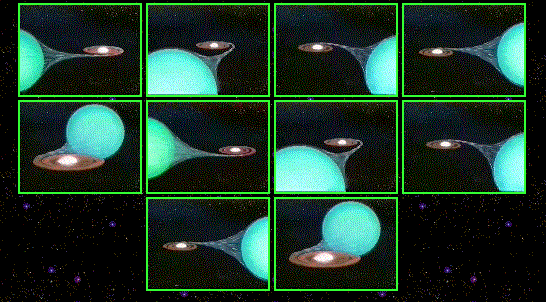
|
Explanation: What does a black hole look like? If alone, a black hole would indeed appear quite black, but many black hole candidates are part of binary star systems. So how does a black hole binary system look different from a neutron star binary system? The above drawings indicate it is difficult to tell! Recent theoretical work, however, has provided a new way to tell them apart: advective accretion flows (ADAFs). A black hole system so equipped would appear much darker than a similar neutron star system. The difference is caused by the hot gas from the ADAF disk falling through the event horizon of the black hole and disappearing - gas that would have emitted much light were the central object only a neutron star. Recent observations of the soft X-ray transient V404 Cyg has yielded a spectrum much like an ADAF onto a black hole - and perhaps brighter than allowable from an ADAF onto a neutron star.
|
January February March April May June July August September October November December |
| ||||||||||||||||||||||||||||||||||||||||||||||||
NASA Web Site Statements, Warnings, and Disclaimers
NASA Official: Jay Norris. Specific rights apply.
A service of: LHEA at NASA / GSFC
& Michigan Tech. U.
Based on Astronomy Picture
Of the Day
Publications with keywords: black hole
Publications with words: black hole
See also:
- APOD: 2025 September 24 Á GW250114: Rotating Black Holes Collide
- APOD: 2025 May 9 Á IXPE Explores a Black Hole Jet
- APOD: 2025 May 6 Á The Doubly Warped World of Binary Black Holes
- APOD: 2025 May 4 Á Spin up of a Supermassive Black Hole
- APOD: 2024 November 24 Á Journey to the Center of the Galaxy
- APOD: 2024 October 1 Á Porphyrion: The Longest Known Black Hole Jets
- APOD: 2024 June 16 Á Animation: Black Hole Destroys Star
